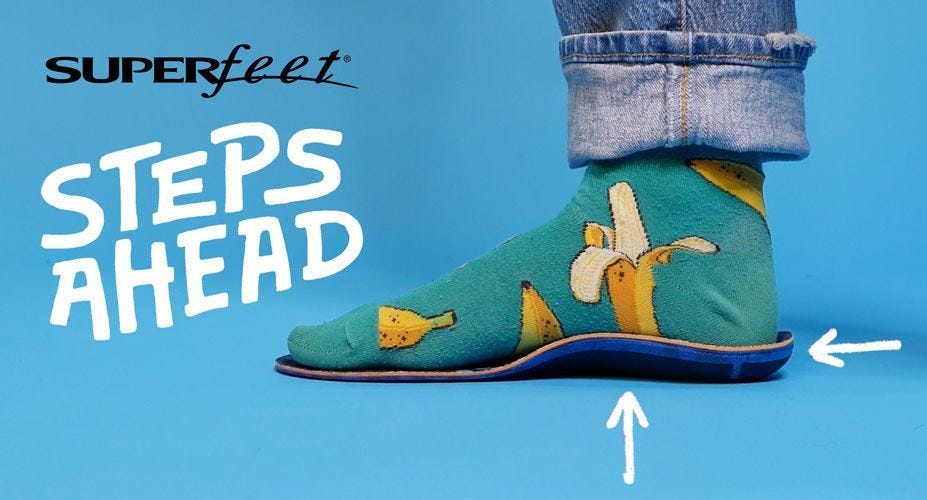
Longtime fans know the incredible comfort and support their favorite Superfeet provide, and every day, new wearers find out how much Superfeet can help relieve pain not just in their feet, but in their joints and back as well. If you’re still looking for your first pair, this quiz can help find the right insoles for you. In our blog series Superfeet: Steps Ahead, devoted and new wearers alike can find out the top reasons Superfeet stand out from other insoles.
Today’s topic is all about the signature shape of Superfeet and why your feet need more than just arch support. With structure that goes all the way through to the back of your heel, Superfeet insoles offer support for your entire rearfoot, helping reduce vibrations that can lead to fatigue.
Find out what happens when Superfeet structure is tested alongside four other insoles in the video below.
Arch and Heel Support – Better Together
Most insoles only focus on the arch and place a single hill of support right in the middle. But the landscape of your foot is more nuanced and requires the right anatomically-designed shape to give you full support from heel to toe. If the structure of your insole doesn’t continue all the way through to the back of the heel, your feet are missing out on a critically important comfort and performance element.
Having one cohesive support structure underneath both your arch and heel helps keep your feet stable as you move, allowing for more efficient strides, meaning you can cover more distance with less effort, and reducing vibrations that can lead to fatigue. Even the softest, most flexible Superfeet have durable structure that give your feet the support they need.


Superfeet Shape – Your Bridge to Comfort
As explained in the video, a bridge is only as good as the forces it can withstand and the same goes for the arch and heel of your foot. Without proper structure underneath, the tissue in your feet can become strained as it flattens out with every step, causing soreness and sometimes debilitating pain.
We used a kettlebell weight to simulate just some of the forces acting on your feet as you move. The single weight provided a simple, straightforward test that we could replicate across insoles. The reasoning was simple: if an insole had enough structure to bridge the gap between both cinder blocks (and thus could support your arch and heel together), it would hold the weight. If not, it would fall to the ground.
We didn’t have much hope for the factory shoe sockliner or flimsy gel insole and sure enough, they crumpled immediately under the weight of the kettlebell. Squishy gel may feel good at first, but it won’t do anything to prevent or relieve pain in the long run. Even the insole that provides some arch structure fell because that structure did not continue through to the back of the heel. Having full rearfoot support in every step is the best thing you can do to prevent or relieve pain, take more efficient strides, and feel good even after a long day on your feet.
Both firm and flexible Superfeet insoles held the weight of the kettlebell. People love the firm foundation of Superfeet All-Purpose insoles, but even Superfeet Run Cushion insoles give your feet structured support while also flexing with your feet as you move. Whatever your comfort preference, you can find the support you need with Superfeet.


